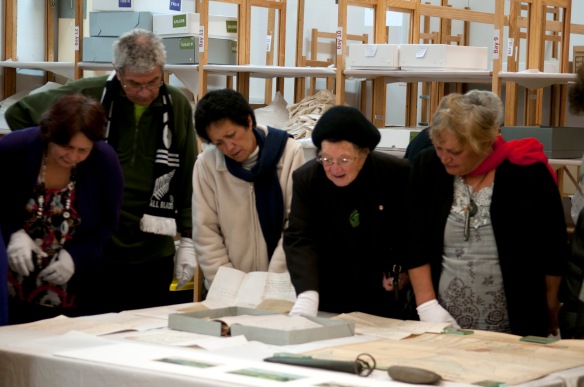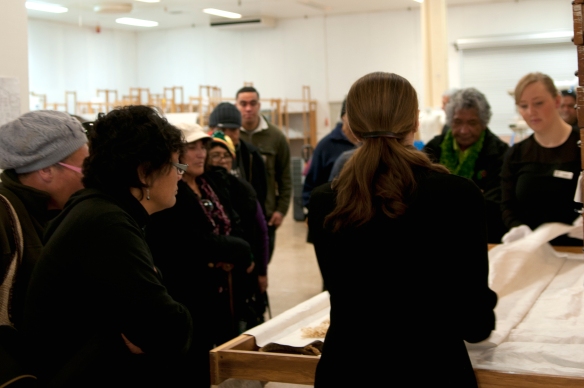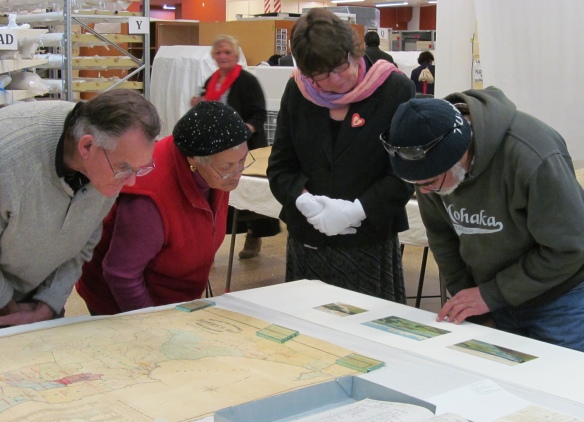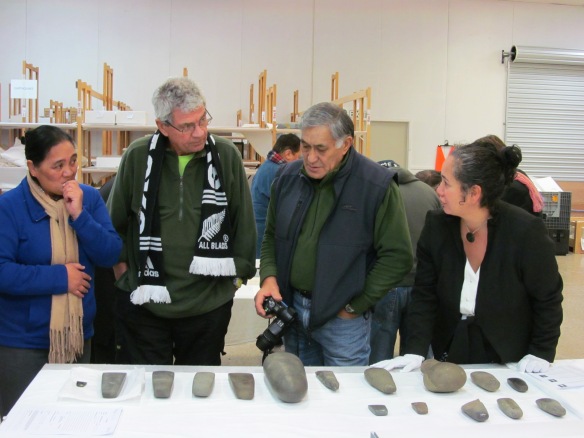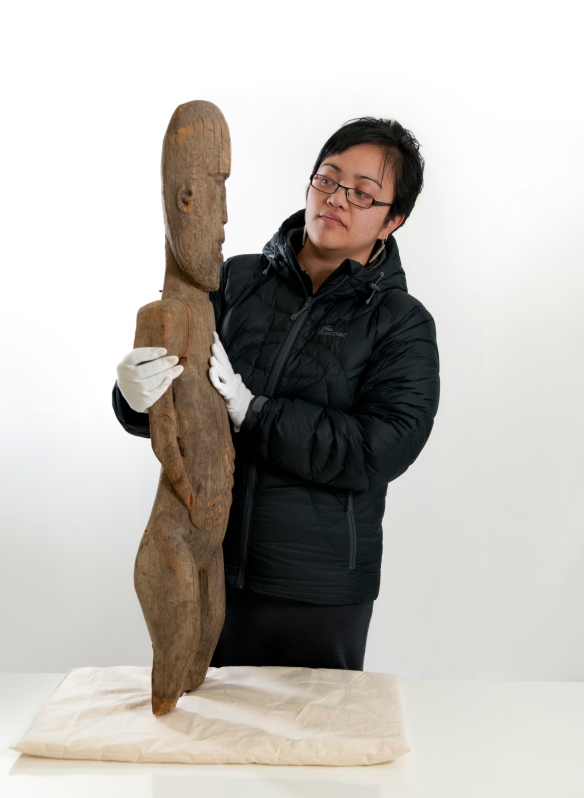
While most are winding down towards the end of the year, the team at MTG Hawke’s Bay Tai Ahuriri are beavering away behind the scenes putting together our last exhibition for 2023. Currently installing curved walls to cradle each story within the display space, I can start to see the shape of the exhibition – moved from paper design to reality within the gallery.
Team members are working on creating mounts to carefully hold each taonga in place, showing them at their best while providing protection and ensuring they will be safe on display. Label and text translations, along with graphic design work are being refined and will soon be ready to put on the walls. Video editing is also happening, so you can hear and see people tell you the stories as well as read them. Working right up to ‘the wire’ Pūrākau o Te Whenua/Stories of the Land will open on Saturday 23 December.
Exploring stories behind place names and from locations around the region, this exhibition grounds us, literally, in our whenua/landa. From classic legends that many people already know, such as Rongokako/Te Mata Peak to, possibly lesser known stories, such as Moumoukai/Wasted Food, you will get a taste of the unique stories of Te Matau-a-Māui. Understanding the significance and meaning behind the place names and stories around us provides a deeper connection to place and an appreciation of the rohe/region in which we live and the whenua upon which we stand.
Having the privilege of working at MTG, I learn something new every day and there’s always so much more to know. There are definitely some new stories I didn’t know before in this display. As always, I’m continually awed and humbled by the generosity with which the community share their knowledge with us. Pūrākau o Te Whenua is another such example, with Ngāti Kahungunu across the rohe sharing stories of the places they call home. There are often a number of versions of any one story and we acknowledge that these can all be valid – perhaps you have your own versions that are different again.
Our whenua is an important and critical resource – which nourishes, protects and sustains us. Earlier in the year Cyclone Gabrielle reminded us in no uncertain terms of the importance of caring for our planet, our country and our home. With the world changing around us, perhaps a stronger sense of connection and responsibility for our land is becoming even more deeply rooted in our psyche. This exhibition provides an opportunity for locals and manuhiri/ visitors to learn more about the beautiful rohe in which we live. With stories from Nuhaka to Hastings we invite you to come and learn more about the whenua where we all live, play and grow.
Published in the Hawke’s Bay Today newspaper on 9 December 2023 and written by Laura Vodanovich, Director at MTG Hawke’s Bay.


